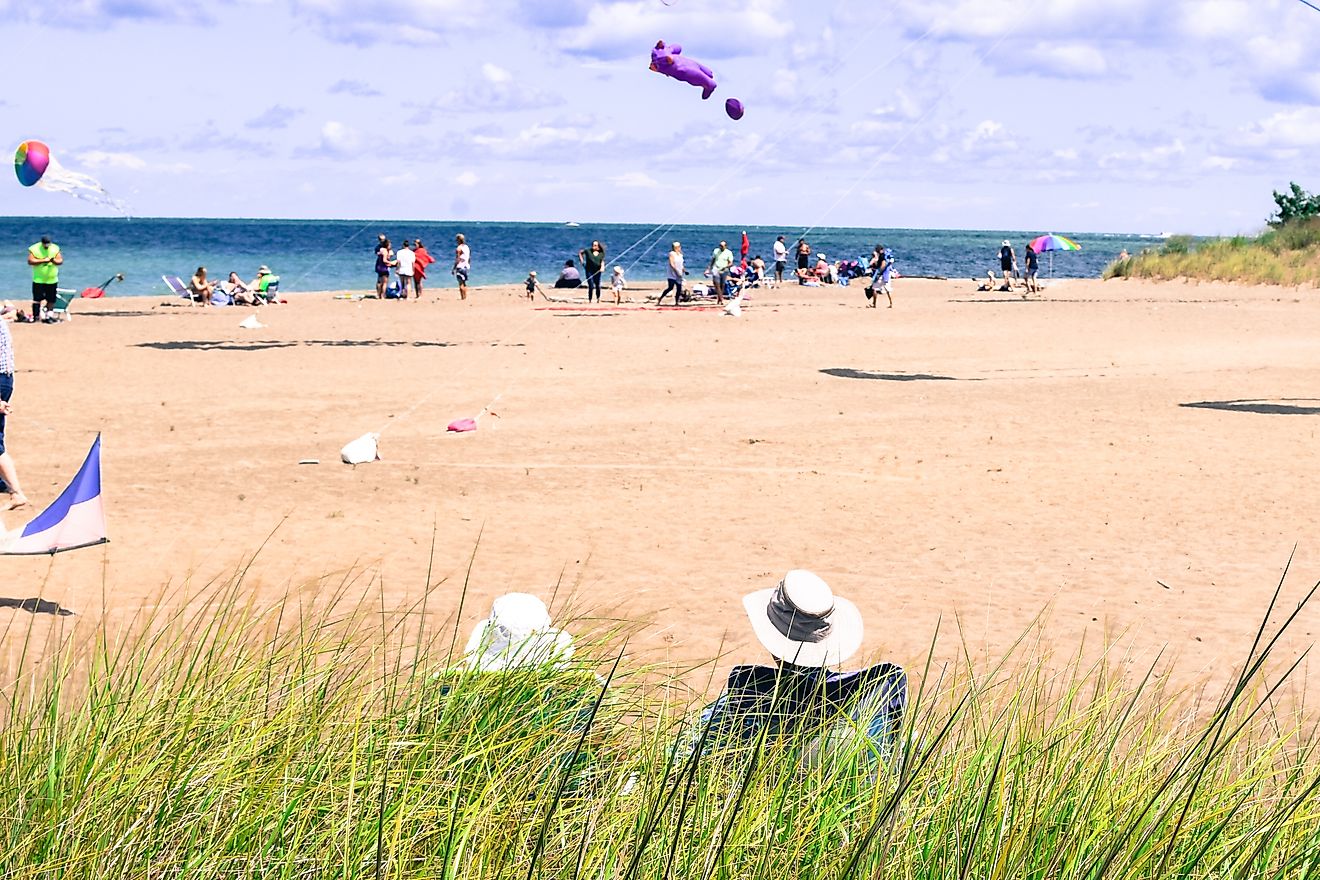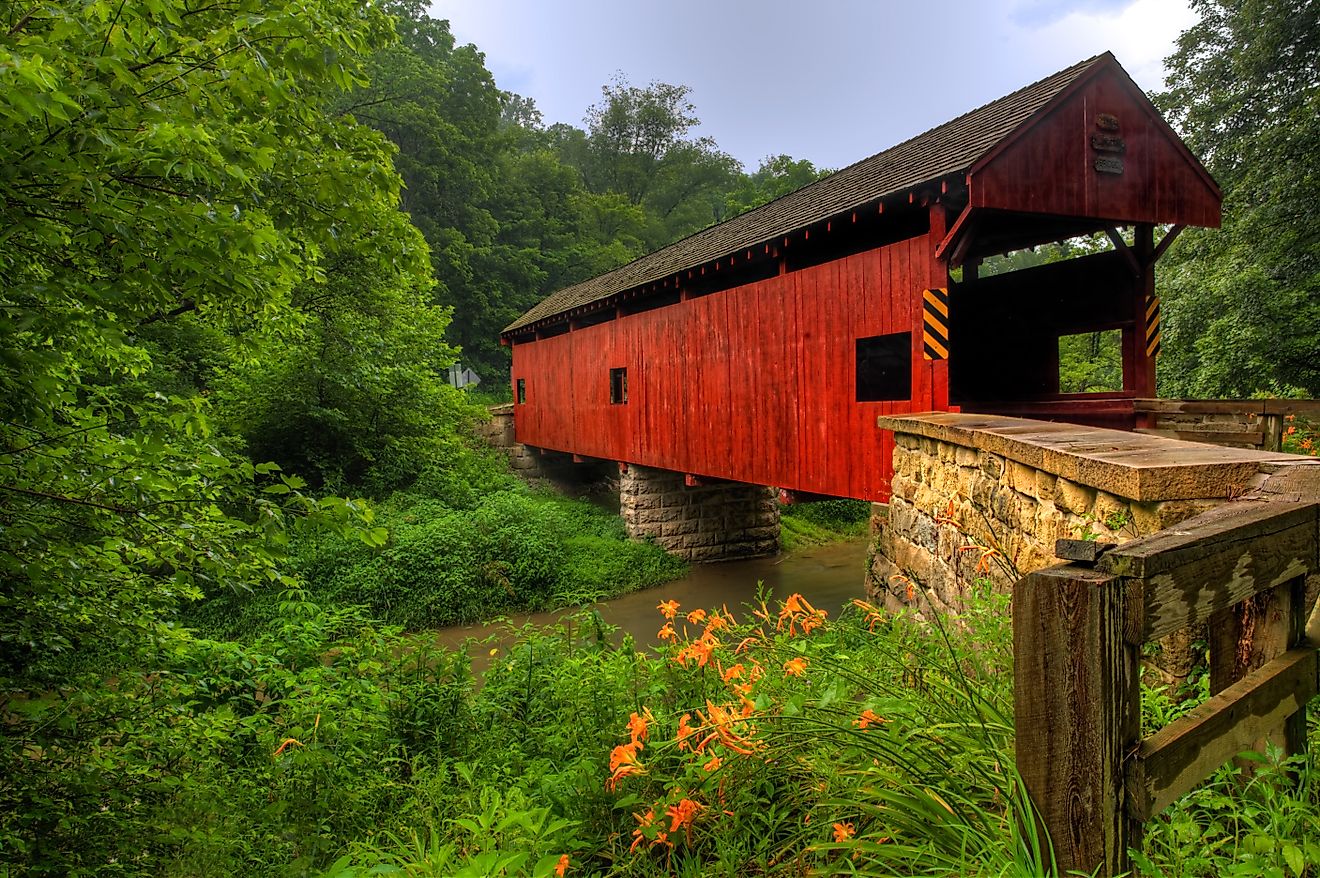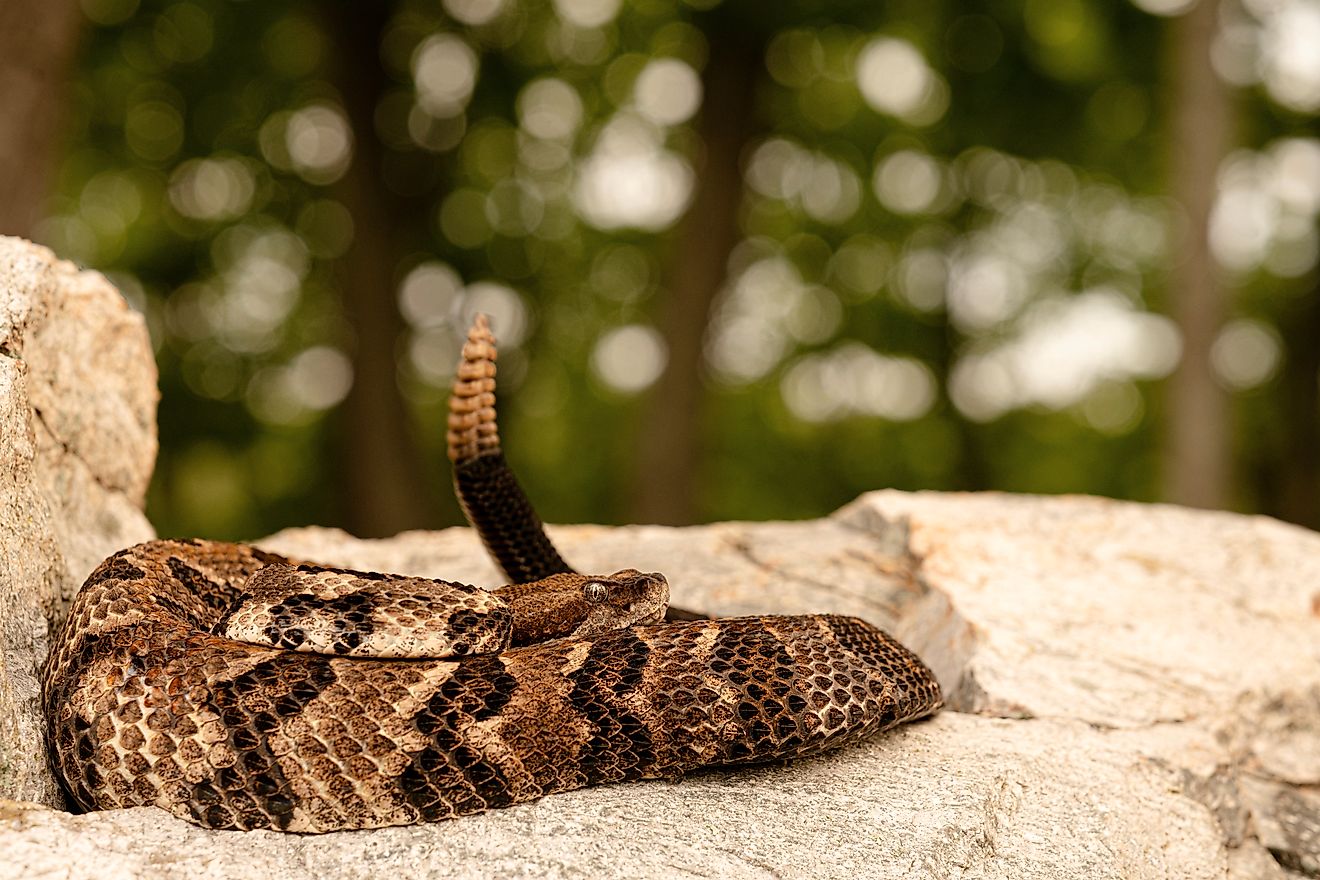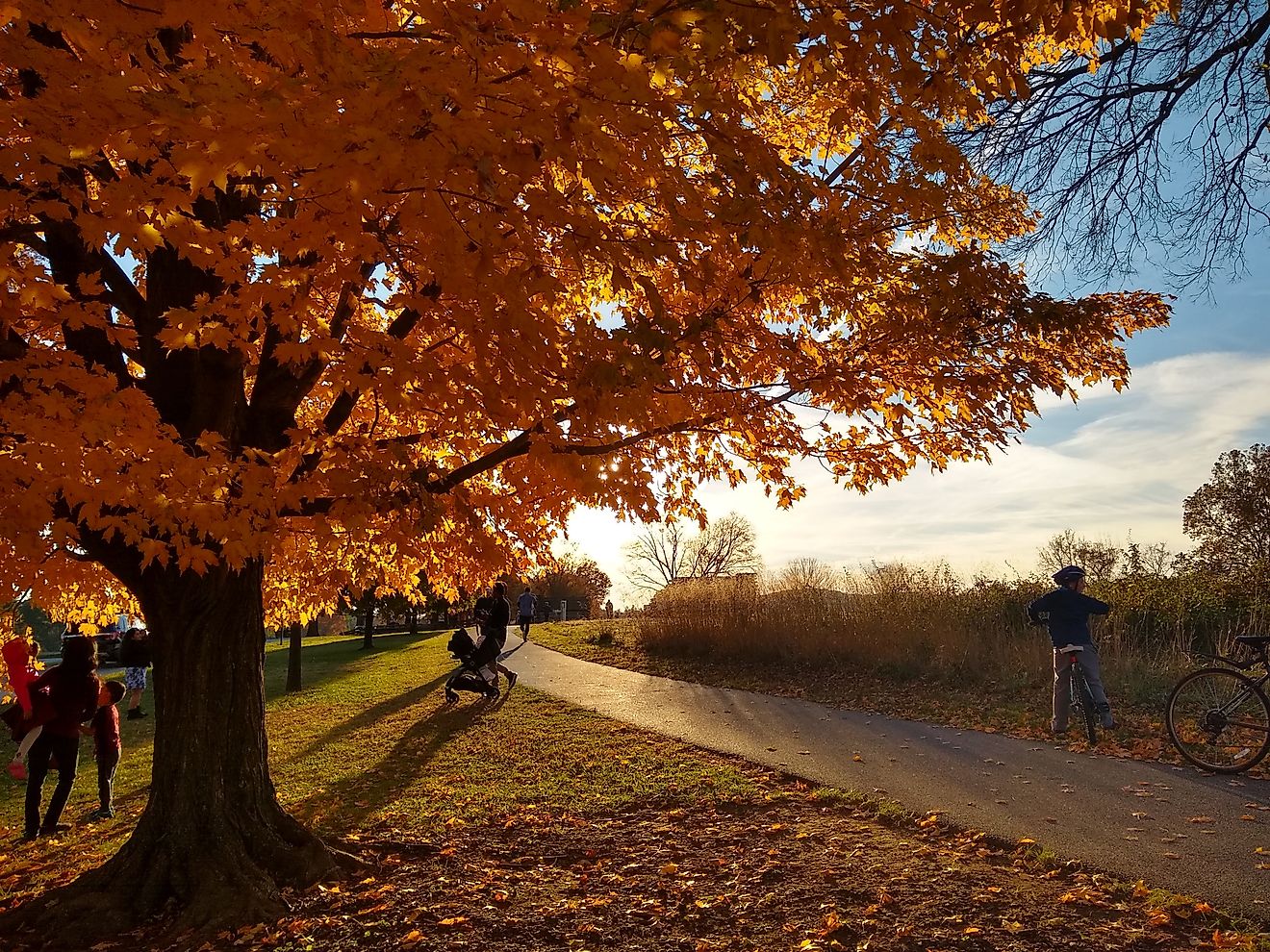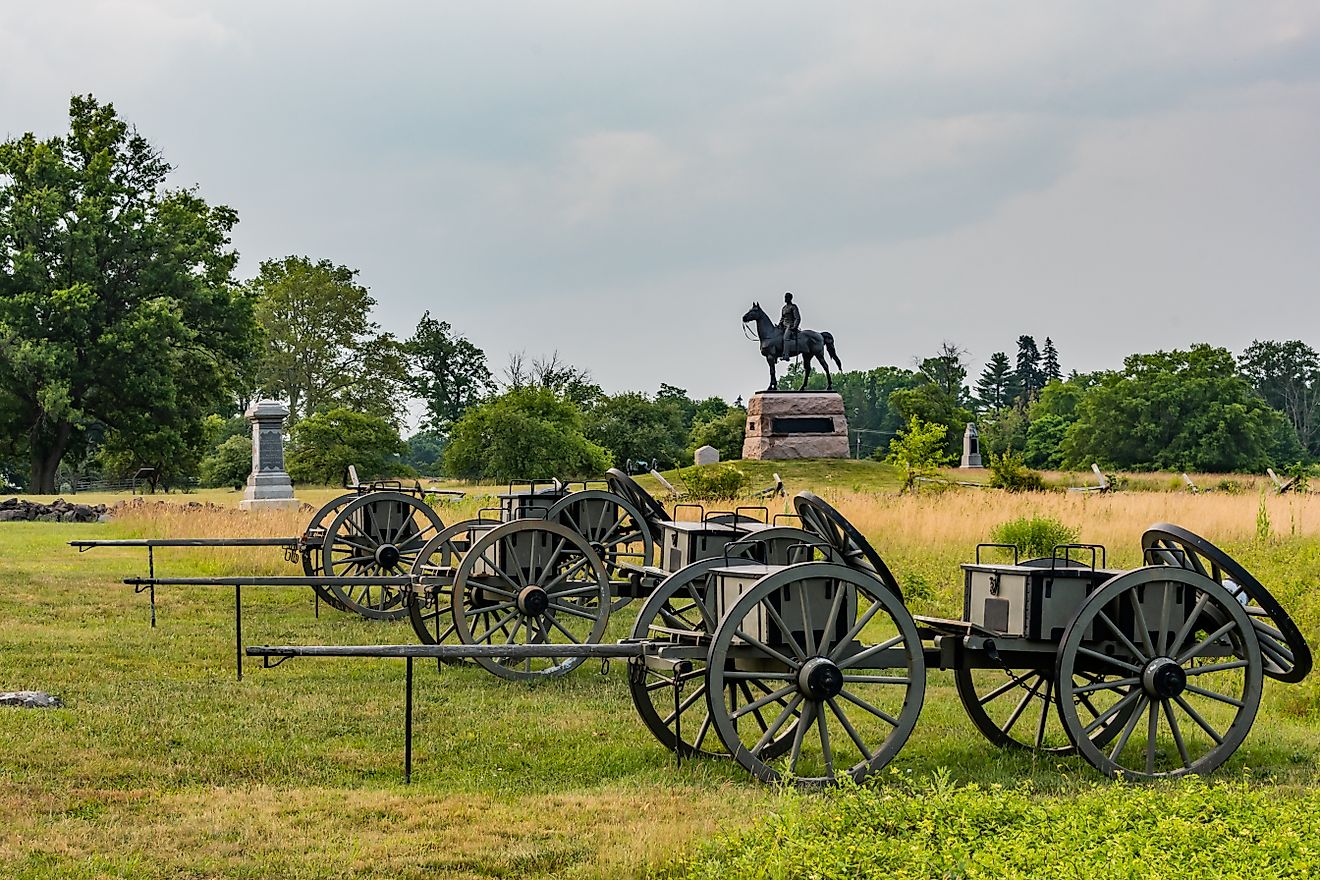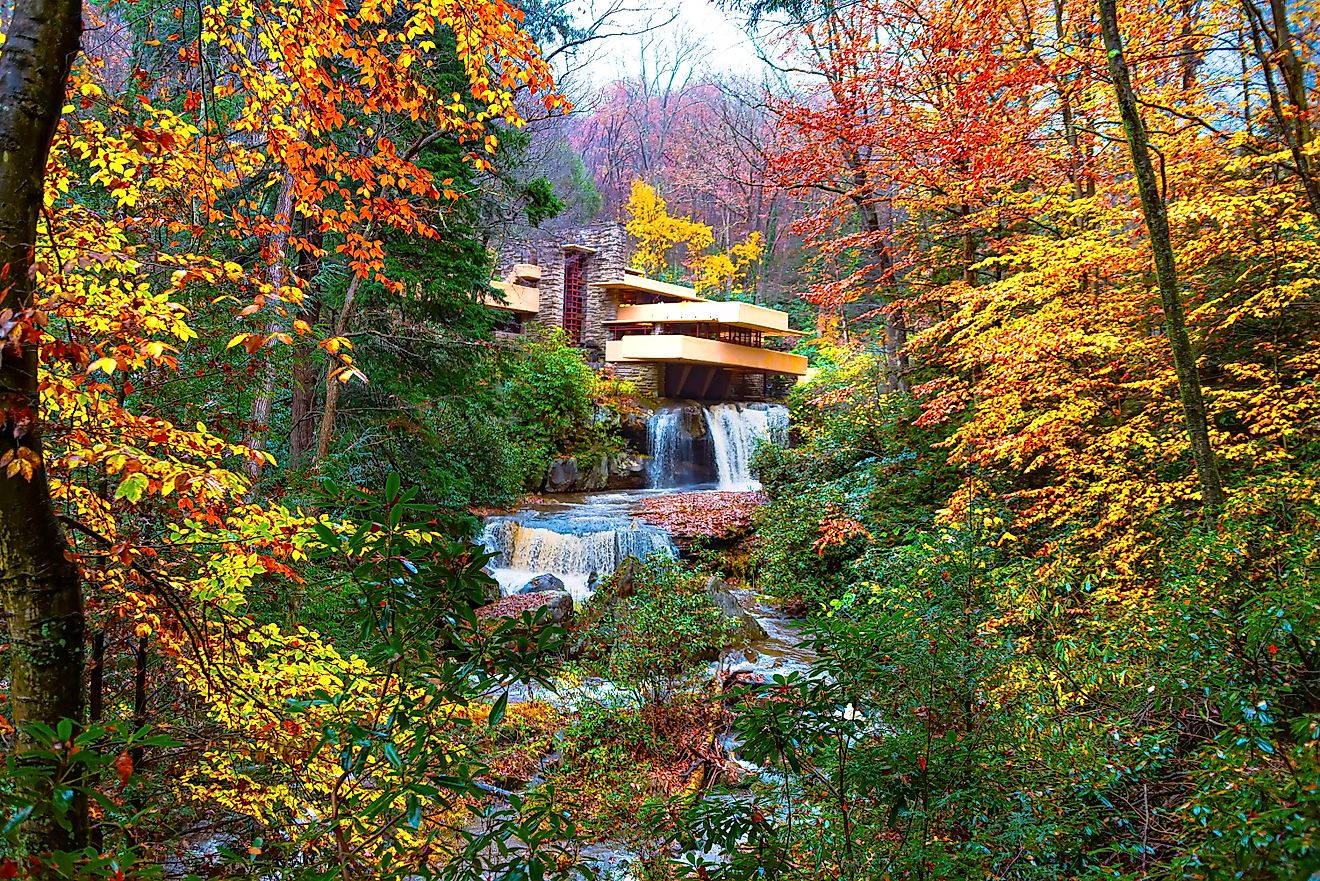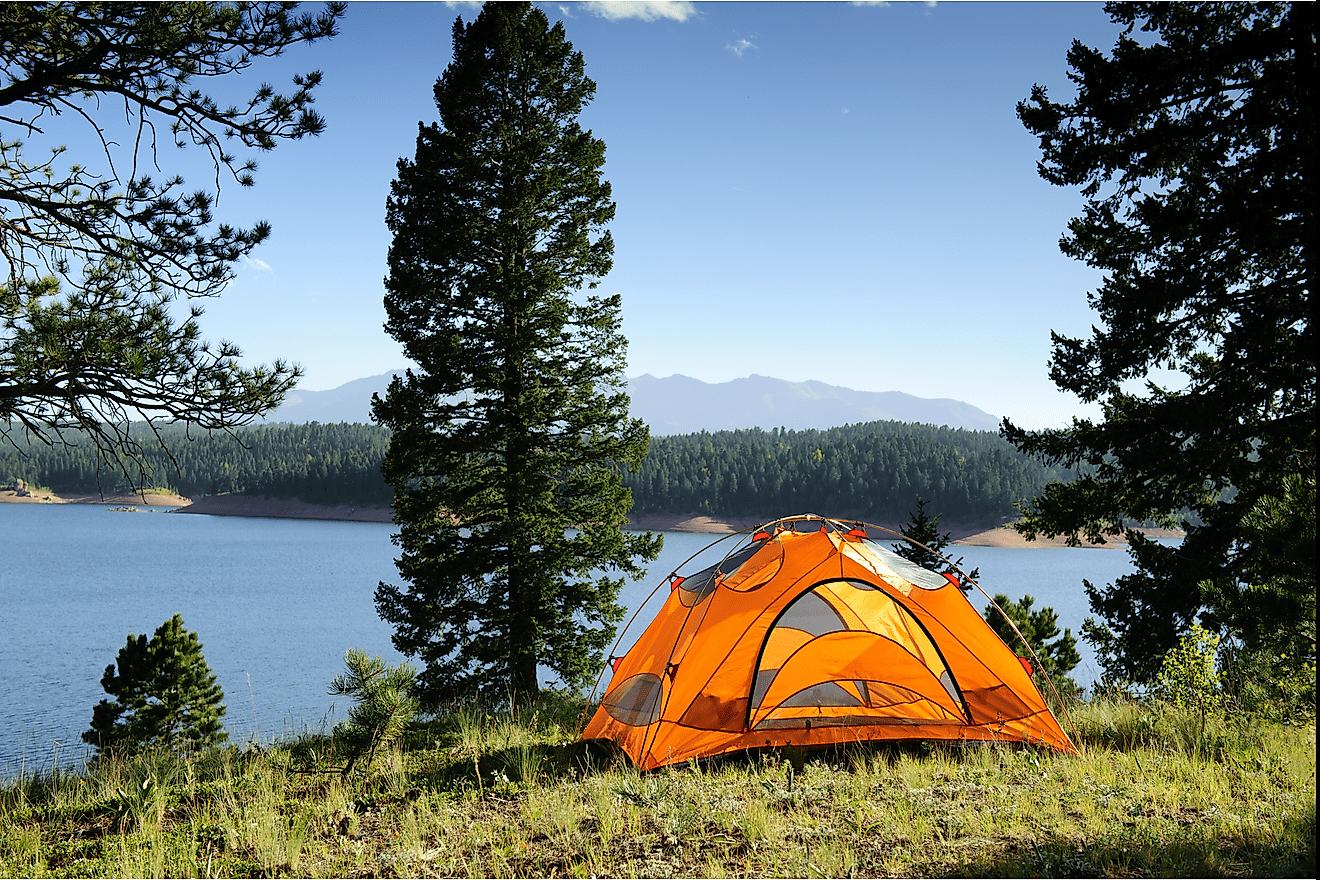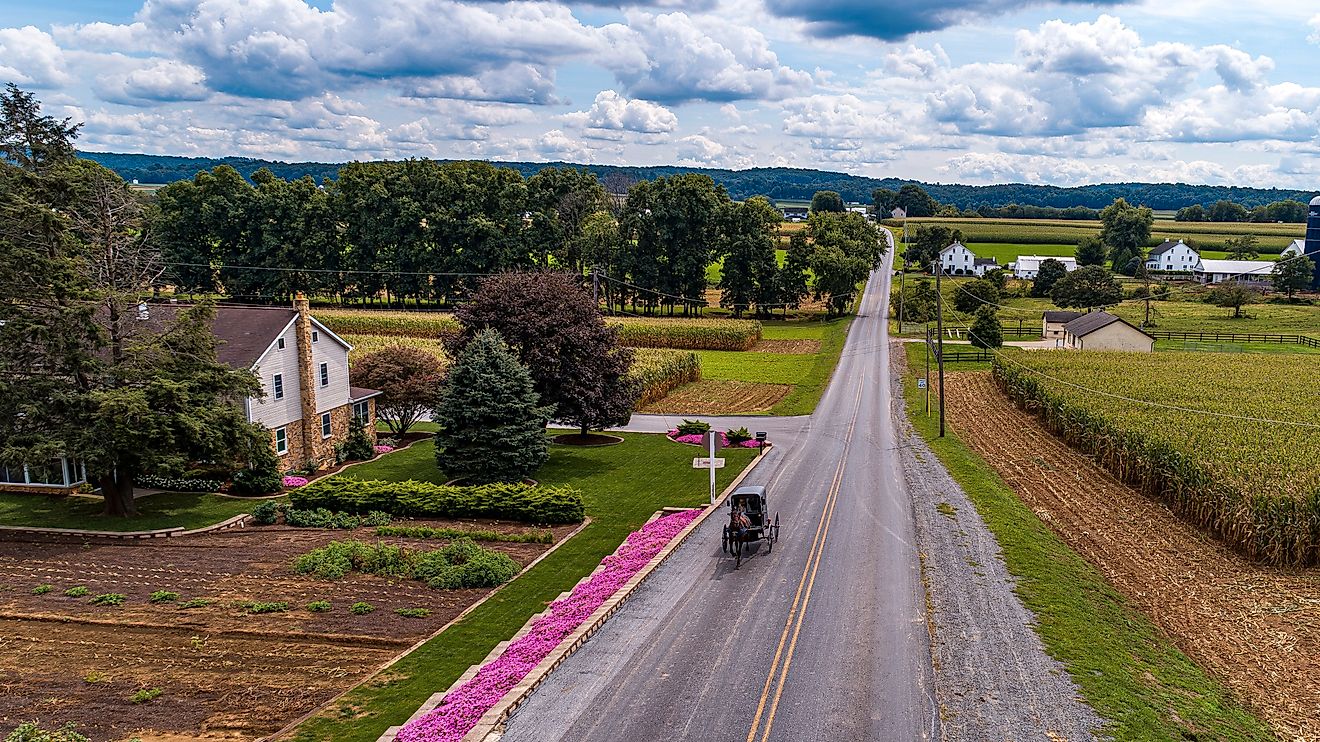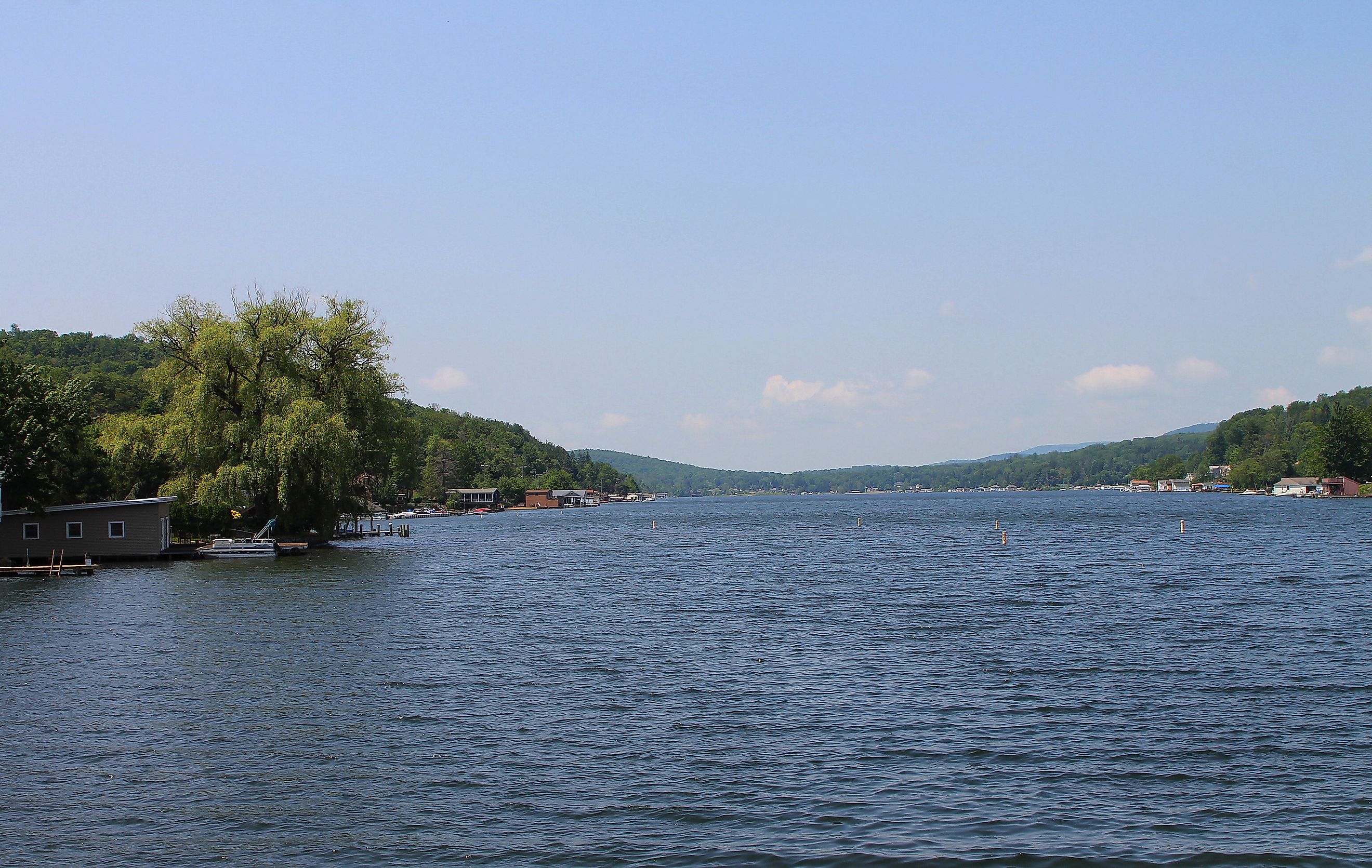
Harveys Lake: The Largest Natural Lake in Pennsylvania
Located among the rolling hills of Luzerne County, Harveys Lake stands as one of Pennsylvania’s most remarkable freshwater treasures. With a surface area of over 620 acres and a rich history that spans centuries, this glacial lake has long captured the imagination of locals, travelers, and outdoor enthusiasts. It is not only the largest natural lake in Pennsylvania by volume but also a hub of recreation, ecology, and community life.
Whether you are a history buff, an angler, or someone looking to experience a unique part of the Keystone State, Harveys Lake has a story to tell. From its accidental discovery in the 18th century to its current role as a beloved summer destination, this lake offers far more than its serene waters suggest.
Where is Harveys Lake Located?
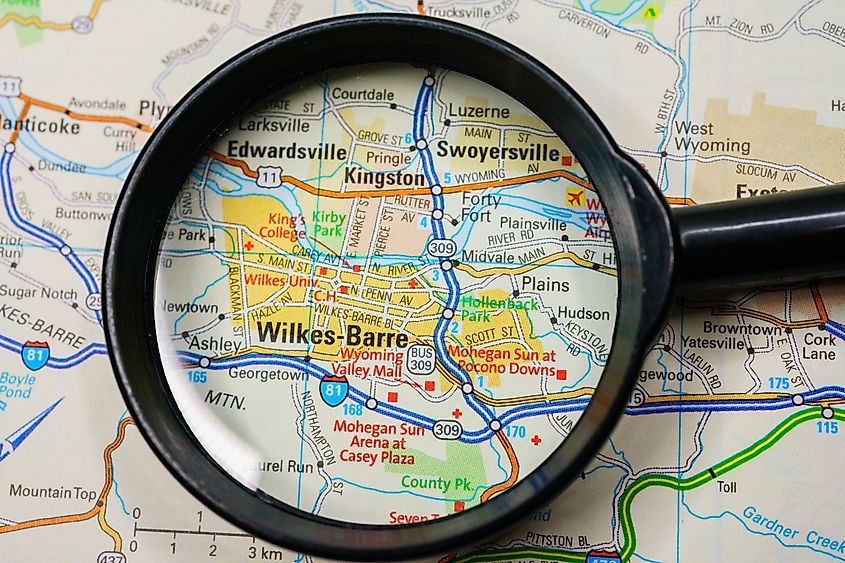
Harveys Lake lies about 12 miles northwest of Wilkes-Barre in northeastern Pennsylvania. It sits entirely within the borough of Harveys Lake and serves as the source of Harveys Creek, which flows into the Susquehanna River. Surrounded by steep hills that rise more than 400 feet above the water, the lake feels like a natural amphitheater carved by ancient glaciers.
The lake’s elevation is 1,253 feet above sea level, making it a cool and refreshing escape during Pennsylvania’s warm summers. A paved road encircles the entire shoreline, creating a unique loop where homes, cottages, and businesses enjoy waterfront views.
How Big is Harveys Lake?
Harveys Lake boasts a surface area of 621.5 acres, nearly a square mile, and holds the title of Pennsylvania’s largest natural lake by volume. By surface area, it comes in second only to Lake Erie’s Presque Isle Bay, but unlike many other bodies of water in the state, Harveys Lake was not created by a dam or reservoir project. It is a natural, glacially formed lake.
Its shoreline stretches 8.3 miles, and the water reaches an average depth of 36 feet, with some areas plunging to an impressive 102 feet. Its total capacity is estimated at 7.7 billion gallons of water.
A Glacial Past and a Changing Present
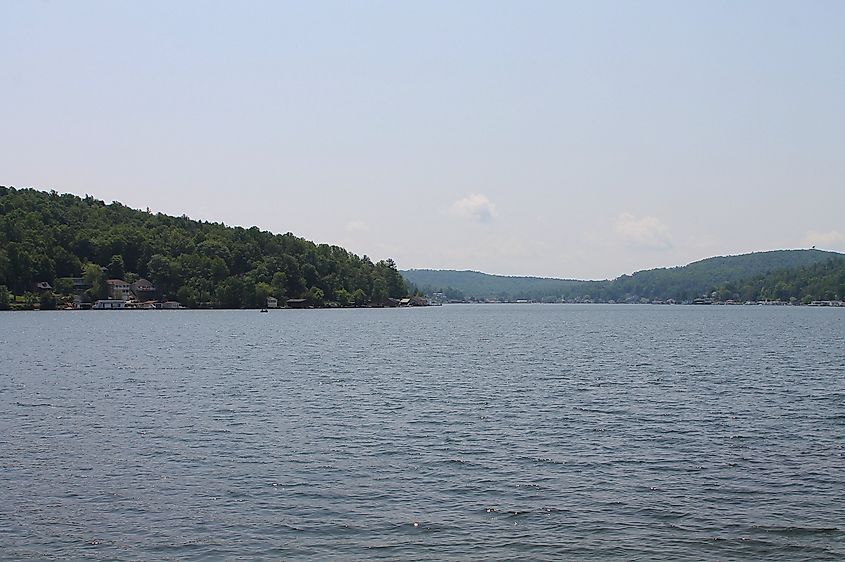
Harveys Lake from the north. Editorial credit: Jakec via Wikimedia Commons
Formed during the last ice age, Harveys Lake is a classic example of a glacial lake. Over the centuries, it has supported a variety of industries, from lumbering and farming to hospitality and tourism. In the late 1700s and early 1800s, settlers used the surrounding land for timber and agriculture. By the mid-19th century, the lake had become a summer resort, with grand hotels, steamboats, and even an amusement park drawing visitors from across the region.
Today, Harveys Lake remains a popular spot for boating, fishing, and lakeside living. While the industries have changed, the lake continues to play a vital role in the cultural and environmental fabric of northeastern Pennsylvania.
A Brief History of Harveys Lake
The lake’s recorded history begins in 1781, when Benjamin Harvey, a member of the Sons of Liberty, stumbled upon it while returning from captivity during the Revolutionary War. Settlers began arriving in the early 1790s, and by the 1800s, the area’s lumber and farming industries were well established.
By the late 1800s, Harveys Lake had earned a reputation as one of Pennsylvania’s premier summer getaways. Grand hotels like the Oneonta and the Lake House Hotel hosted wealthy visitors, and steamboats ferried guests across the water. At its peak, the lake supported hundreds of cottages, dozens of boathouses, and a bustling tourism economy. Even President Theodore Roosevelt visited in 1912.
The arrival of the Lehigh Valley Railroad and later automobile travel made the lake more accessible, further cementing its status as a vacation hotspot. Throughout the early 20th century, it provided ice, drinking water, and recreation for nearby communities.
Environmental Challenges and Conservation Efforts
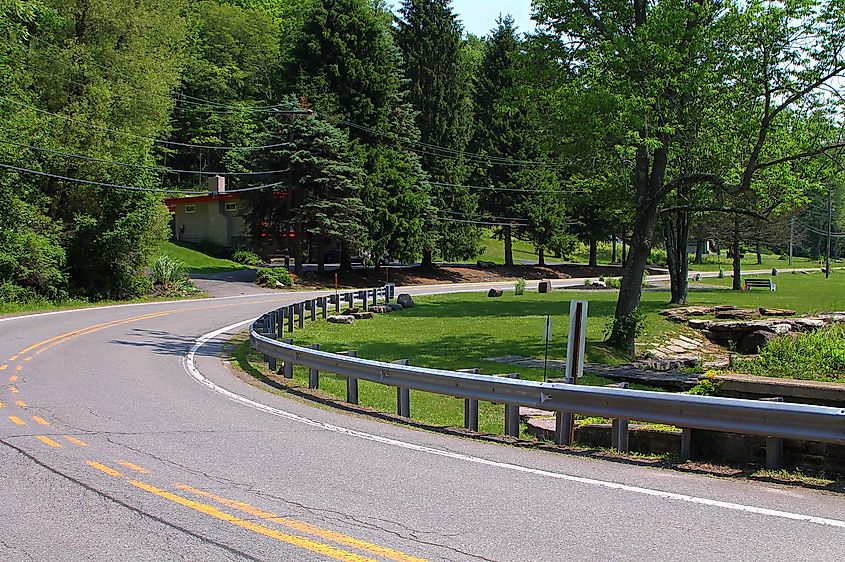
Pennsylvania Route 415 going around a bend near Harveys Lake in southwestern Harveys Lake, Luzerne County. Editorial credit: Jakec via Wikimedia Commons
Like many popular lakes, Harveys Lake faced environmental challenges as development increased. In the mid-20th century, nutrient pollution led to algae blooms that reduced water quality and even caused swimming bans in the 1980s and 1990s. The main culprit was phosphorus from shoreline runoff, septic systems, and nearby development.
In 1994, the lake was officially identified as impaired, prompting the creation of a phosphorus reduction plan. Since then, significant strides have been made. Modern sewage systems, better stormwater management, and conservation initiatives have helped lower phosphorus levels by nearly 30 percent.
Today, Harveys Lake remains under watch by environmental agencies and local organizations, but its water quality has improved enough to support recreation, wildlife, and residential use.
Wildlife and Ecology at Harveys Lake
Harveys Lake is more than a scenic retreat. It is an important ecological site listed on the Luzerne County Natural Areas Inventory. Rare and endangered plant species such as Vasey's pondweed, Beck's water-marigold, and flat-leaved pondweed have been documented along its shores. At the same time, invasive species like aquatic coontail and fanwort have altered parts of its habitat.
The lake supports a variety of native fish, including rainbow trout, lake trout, and at one time, even sockeye salmon. It is designated as a High-Quality Coldwater Fishery, which helps preserve its aquatic ecosystem. Anglers can catch up to three trout per day, with strict size limits to protect larger specimens.
Birdwatchers also find Harveys Lake fascinating. Species ranging from surf scoters to ruddy ducks and even the occasional Franklin’s gull have been spotted there.
Recreation: What Can You Do at Harveys Lake?
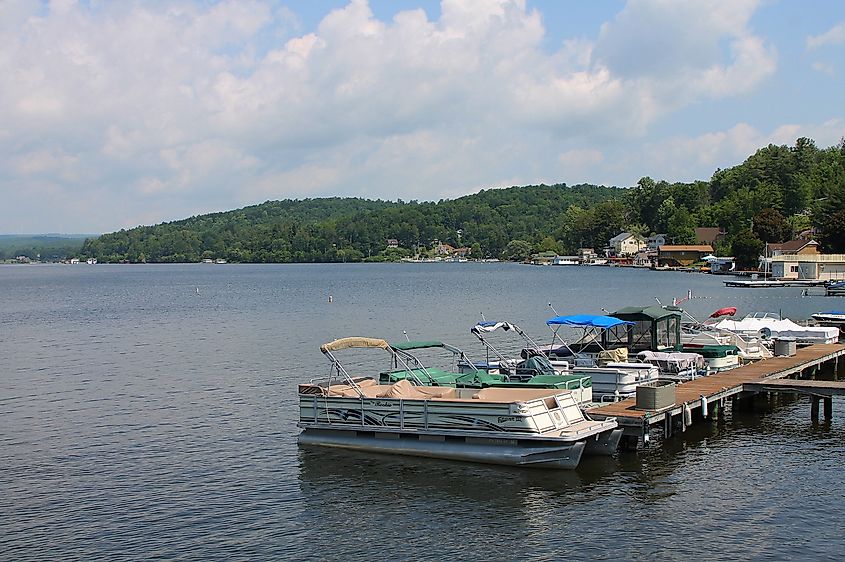
Boats on the southern end of Harveys Lake. Editorial credit: Jakec via Wikimedia Commons
Despite its environmental challenges, Harveys Lake has remained a center for outdoor recreation for over a century. Popular activities include:
-
Boating: The entire shoreline is lined with private docks, and the lake is well-suited for motorboats, sailboats, and kayaks.
-
Fishing: Anglers visit year-round to catch trout, bass, and panfish. Ice fishing is also common in winter.
-
Swimming: Several private beaches and clubs offer swimming access during the summer months.
-
Lakeside Events: The borough hosts seasonal festivals, regattas, and community gatherings that celebrate the lake’s history and beauty.
While the lake does not have extensive public access for swimming or SCUBA diving, its paved shoreline makes it easy to view from almost any angle.
The Unique Character of the Borough
Harveys Lake became an official borough in 1968, encompassing the lake itself and the immediate surrounding area. Development has remained concentrated along the shoreline, with most homes, cottages, and businesses located within half a mile of the water. This close-knit layout creates a strong sense of community among residents and seasonal visitors.
A single road runs around the lake, making it a scenic drive for anyone exploring the region. From family-owned restaurants to small marinas, the businesses along this road reflect a mix of old Pennsylvania charm and modern lakeside living.
Challenges of Development
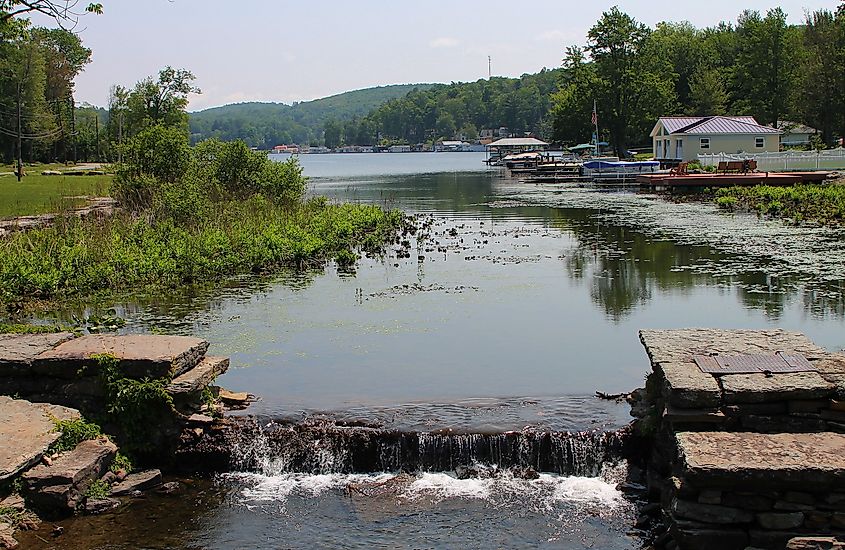
Harveys Lake Dam, a stone dam at the outflow of Harveys Lake and the headwaters of Harveys Lake. Editorial credit: Jakec via Wikimedia Commons
One of the defining features of Harveys Lake is that it is completely encircled by development and pavement, a rarity among natural lakes. While this makes the lake accessible, it has also contributed to stormwater and nutrient runoff issues. Projects in recent decades have focused on reducing these impacts through improved drainage systems, the use of nutrient-separating baffle boxes, and educational efforts to promote responsible shoreline practices.
As a result, Harveys Lake has become a case study in how a heavily used natural lake can balance recreation with conservation.
Visiting Harveys Lake Today
Visitors to Harveys Lake can enjoy a mix of outdoor recreation, small-town hospitality, and scenic drives. The area offers seasonal rental properties, lakeside dining, and easy access to other northeastern Pennsylvania attractions like Ricketts Glen State Park and the Wyoming Valley.
The best times to visit are late spring through early fall, when the water is warm enough for boating and swimming. Fall brings colorful foliage reflected on the lake’s surface, and winter attracts ice fishermen and those seeking a quiet retreat.
Final Thoughts: A Pennsylvania Gem Worth Knowing
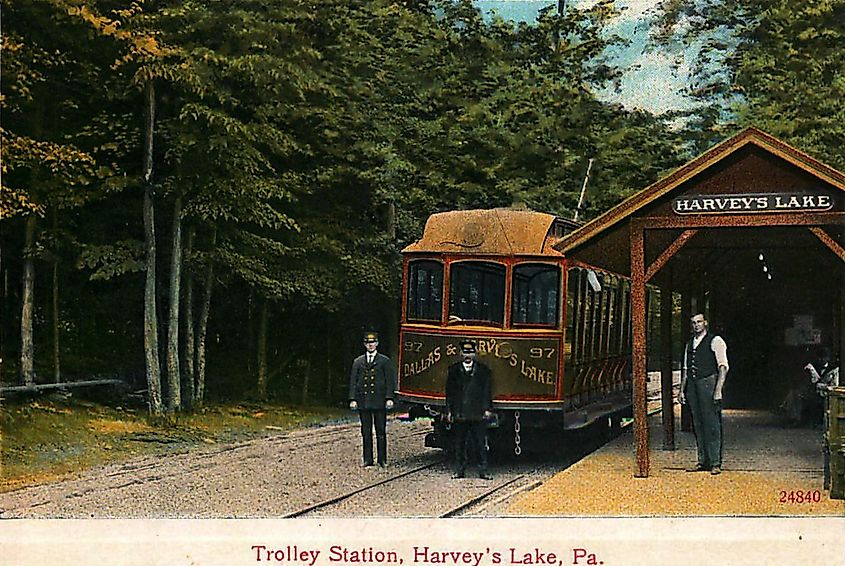
Harveys Lake is more than just a large body of water. It reflects Pennsylvania’s history, from its Revolutionary War roots to its heyday as a Gilded Age resort. It showcases both the challenges and successes of managing natural resources in a developed landscape. And most importantly, it continues to serve as a gathering place for families, boaters, and anglers who cherish its deep blue waters.
In a state dotted with reservoirs and man-made lakes, Harveys Lake stands apart as a natural wonder that has adapted to modern pressures while holding on to its charm.
Key Facts About Harveys Lake
-
Location: Luzerne County, Pennsylvania, 12 miles northwest of Wilkes-Barre
-
Size: 621.5 acres surface area, 8.3 miles shoreline
-
Depth: Average 36 feet, maximum 102 feet
-
Elevation: 1,253 feet above sea level
-
Origin: Glacial lake with a gravel bottom
-
Outflow: Harveys Creek, tributary of the Susquehanna River
-
Established Borough: 1968
